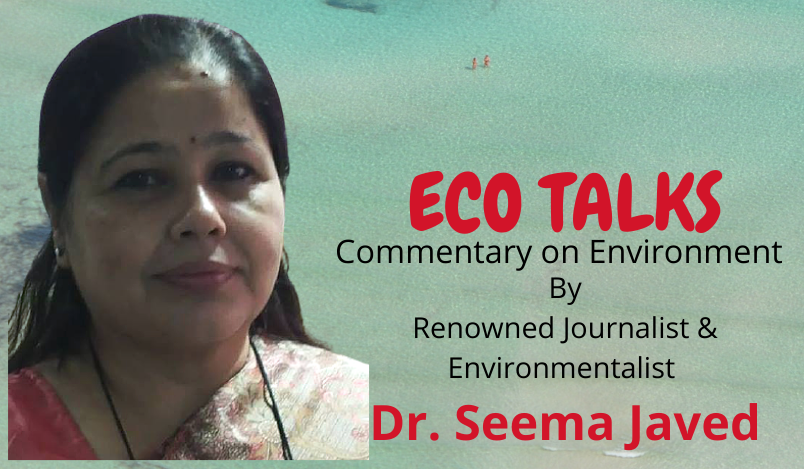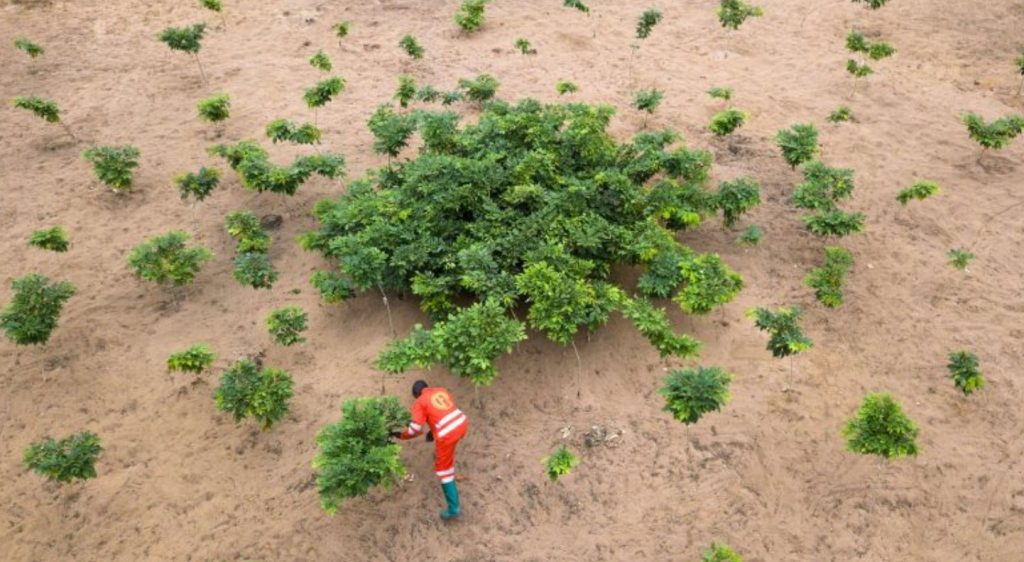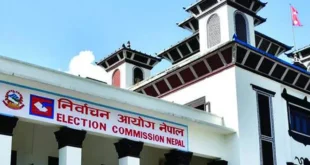
A new study on Roadmap for Scaling Trees Outside Forests (ToF) in India: Learnings from the Select States on Policy Incentives, Enabling Conditions, and Barriers was released by the World Resource Institute India (WRI India) launched by Dr. Rajiv Kumar, Vice Chairman-NITI Ayog.
The launch of the working paper was followed by a panel discussion with representation from key organisaations like National Bank for Agriculture and Rural Development (NABARD), Black Baza Coffee Co, and Balipara foundation on critical insights for scaling ToF systems in India.
As, the recent IPCC report on Climate Impacts, Adaptation, and Vulnerability highlighted high risk to country’s economy as well as food security due to increased climate impacts, it rings an alarm bell for at least 700 million people in India, dependent on forests and agriculture for survival.]

With competing demands on land and increasing climate risks, expansion of ToF systems, where socially and ecologically appropriate, can sustain delivery of valuable ecosystem services, improve opportunities for green livelihoods and jobs, and fulfill people’s food and nutrition needs in India.
Dr. Rajiv Kumar, Vice Chairman, NITI Ayog, who launched the report, said, “Farming models that can boost farmers’ incomes as well as help us address climate change is need of the hour for India.
We already have policies at both national and state levels which support natural farming and WRI India’s study now presents us with the next step – resolving the roadblocks and replicating best practices can help us build an effective action plan for India”.
Around 29.38 million hectares of land in India has a potential for scaling ToF systems, as estimated by the Forest Survey of India in 2019. Examining ToF implementation systems in six Indian states – Gujarat, Karnataka, Maharashtra, Odisha, Punjab, and Telangana, WRI India identified policy incentives, opportunities, and barriers significant for planning wide scale adoption of ToF practices in India. While incentives on their own cannot achieve ToF goals, they are instruments that can play a pivotal role of powerful policy lever. Dr. Ruchika Singh, Director, Sustainable Landscapes and Restoration, WRI India, said “Nature-based Solutions like agroforestry and urban forestry offer multiple co-benefits by
mitigating climate risks for people and the planet, which is also indicated with the high level of confidence in the recently released IPCC AR6 WGII report. Our paper comes up with a roadmap to consider for scaling expansion of trees outside the forest responsibly, at the right place, considering
social and ecological considerations. This can also support meeting India’s climate sequestration goals and improving livelihood enhancement, and building people’s resilience”.
Key study findings are
• Agroforestry (in form of trees on bunds or boundaries, fruit orchards, and agri-horti- forestry/ wadi) is the most supported ToF system under present policies and schemes in India.
• Farmers can avail seven types of monetary incentives and three types of non-monetary incentives for adopting ToF practices, these include input subsidies, performance-based payments, grants such as NABARD’s Tribal Development Funds, credit-linked loans, inter alia. However, access to these incentives for users needs to be optimized.
• Presence of supply chain infrastructure, regulatory mechanisms and technical assistance are crucial for scaling ToF practices like agroforestry.
• Private sector can play a significant role by offering new business models and strengthening value chains for farmers, further incentivizing them to plant and grow trees.
• Present policies lack support for traditional ToF practices with native tree species which are prioritized by women and other marginalized people dependent on these multipurpose trees for food, fuelwood, fodder, and nontimber forest produce. There is focus on plantation schemes that prioritize fast-growing species, results of which can be sub optimal.
• Efforts are needed to boost agriculture extension services to improve better information access for farmers on available ToF models, policy support, and various incentives.
• Issues such as unclear permits for harvest and transit, and neglected land and tree tenure are major disincentivizing factors for tenant farmers and women in adopting ToF models Marie Duraisami, Former Manager, Sustainable Landscapes & Restoration, WRI India, further explained significance of traditional agroforestry systems, most particularly for rural areas in India, “Trees in rainfed agriculture provide greater resilience; they diversify farmer incomes and have the potential to create jobs, particularly for women and landless people. Shifting incentives to suit the
needs of women and marginalized communities and promoting traditional agroforestry system can
help India achieve its development and climate commitments”.
Envisioning a win-win model for both people and environment, Dr. OP Agarwal, CEO, WRI India, said, “WRI India is constantly working to evolve solutions that can protect India’s natural resources and improve people’s lives. Mobilizing farmers to adopt practices such as agroforestry with better incentives, enabling environment, and supportive market linkages will mark a considerable shift of our land use patterns towards sustainable agriculture”. Scaling agroforestry and other ToF systems through a landscape restoration approach presents a unique opportunity for India in meeting country’s food and nutrition security demands, improve people’s livelihoods and achieve our climate goals. This study recommends:
• Develop restoration plans and strategies using a landscape approach at state and district
levels.
• Factor the needs of local population, women, and marginalized communities in planning for ToF and design incentives that can enable securing land and tree tenure.
• Design incentives to protect existing ToF and to promote traditional ToF models with native\ species, for example scope to explore payment for ecosystem services.
• Improve, standardize, and customize input subsidies, which are the most commonly available and availed of incentive. Expand incentives such as minimum support price which are available for limited commercial and horticultural produce.
• Tree insurance for ToF systems needs to be promoted with payment mechanisms that are
attractive and viable for farmers
• Create inclusive monitoring mechanisms for the progress of ToF interventions along with
the flow of benefits, challenges, and success stories.
• Strengthen blended finance models and innovation business models, develop certification
standards
 Jubilee Post News & Views
Jubilee Post News & Views





